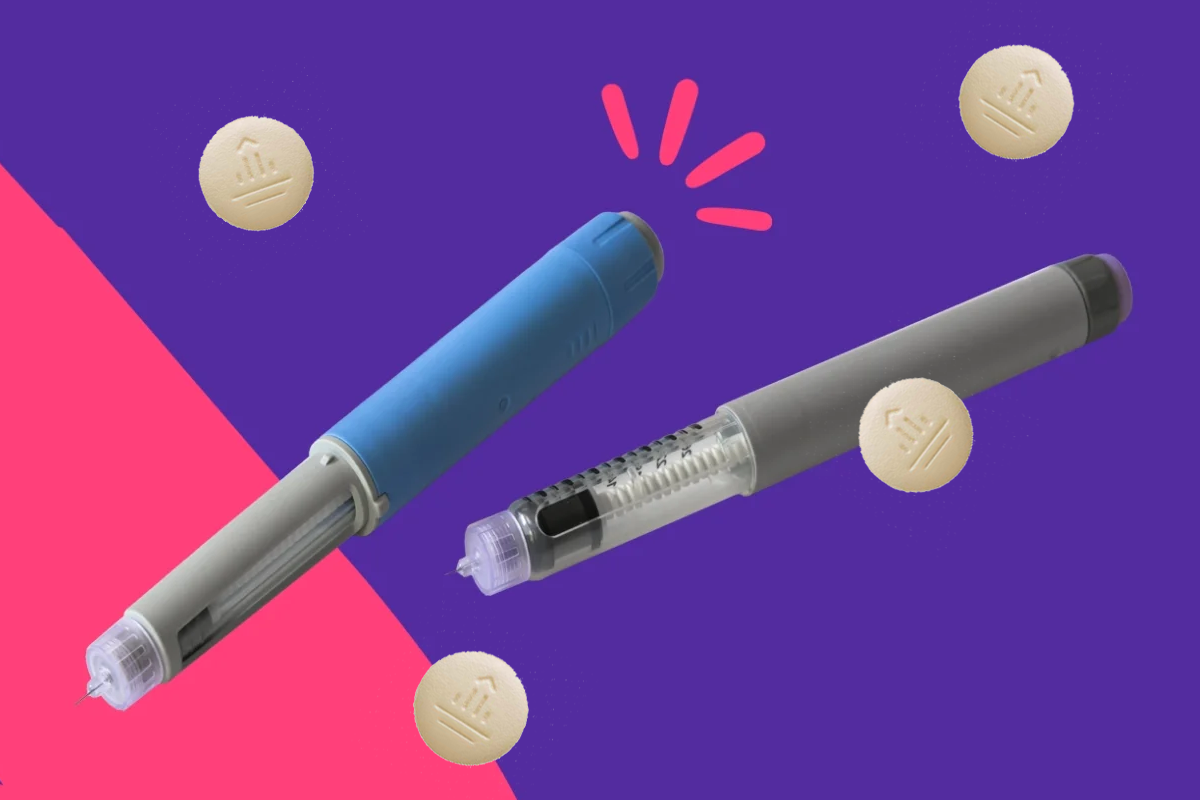

3 Ways GLP-1 Drugs Could Impact Your Hospital’s Future

Glucagon-like peptide-1 agonist drugs have been surging in popularity, and manufacturers are scurrying to keep up with demand. The relatively new drugs — the first being approved by the Food and Drug Administration (FDA) in 2005 — also signal a significant shift in how hospitals and health systems treat chronic conditions such as type 2 diabetes and heart disease.
GLP-1 agonist drugs are most often used to help type 2 diabetes patients lower their blood sugars or to help patients with heart disease prevent heart attacks or strokes, but some also can help treat obesity and soon could be approved for sleep apnea and other treatments.
Just how far these drugs have penetrated the marketplace was illustrated in a Kaiser Family Foundation (KFF) tracking poll released this month. The data paint a clearer picture of the demographics of those taking these drugs and the difficulties many are having with affordability.
Zeroing In on GLP-1 Users
The survey found that:
- About one in eight adults (12%) say they have taken a GLP-1 drug, including 6% of adults who are currently taking one of these medications.
- The shares of adults who report ever taking these drugs is highest among people with diabetes (43%), followed by those with heart disease (26%) and those who are obese or overweight (22%).
- Most respondents (62%) who have ever taken a GLP-1 drug say they took the drugs to treat a chronic condition such as diabetes or heart disease. But nearly four in 10 (38%) say they took the drugs solely to lose weight.
- More than half of those who have used GLP-1s say they found it difficult to afford the drugs even with insurance, rebates and discount coupons.
A separate KFF analysis from March about Medicare Part D spending data from the Centers for Medicare & Medicaid Services found that gross Medicare spending on the three newest versions of GLP-1 diabetes medicines (Ozempic, Rybelsus and Mounjaro) that also have been approved for weight loss skyrocketed from $57 million in 2018 to $5.7 billion in 2022. Overall, the GLP-1 market is expected to experience annual growth exceeding 20% and will hit $133 billion worldwide by 2030, according to a MarketWatch report from February.
3 Takeaways on GLP-1s and the Future
1 | Beyond weight-loss applications to treating cardiovascular disease.
Hospitals clearly are feeling the impact from the growing use of GLP-1s and widespread weight loss could affect providers’ operations downstream. In a double-blind study, semaglutide, a medication that acts like the GLP-1 hormone made by the body after eating, significantly benefited patients who were overweight or obese who had a history of heart disease but no diabetes.
The study, published in November in the New England Journal of Medicine, found that patients who took the medication had lower rates of significant heart events like heart attack and stroke than patients who took a placebo.
Takeaway
Jorge Plutzky, M.D., a Mass General Brigham cardiologist who was instrumental in designing and running the trial as a steering committee member, noted that the landmark study means semaglutide could help large numbers of patients with heart disease in the future. Some manufacturers already are investing heavily in efforts to expand their production. Novo Nordisk, which manufactures the popular weight-loss drug Wegovy, earlier this year paid $11 billion for three fill-finish manufacturing sites that in part will help ramp up its production of drugs to treat obesity and diabetes.
2 | Health systems partner for data insights on GLP-1s.
Researchers continue to study the effects of these drugs on different conditions and populations and to test for secondary indications to treat other diseases. As they do, they will need large volumes of data and artificial intelligence (AI) technology computational analysis.
Dandelion Health, a tech startup, recently launched a GLP-1 data library to share insights and opportunities related to the drug class. The platform features real-world data on an AI platform. The company worked with three health system partners — Sanford Health, Sharp HealthCare and Texas Health Resources — to collect structured and unstructured data from more than 10 million patients across a range of populations and longitudinal patient journeys.
Takeaway
The vision is for real-world patients on each of these drugs to be followed over the next two to four years to see what happens to their cardiac risk scores, and how that relates to their body mass index or other comorbidities. Perhaps other medicines will surface that do a comparable or better job for select patient groups.
3 | Broader indications for GLP-1s could be coming.
With GLP-1s already approved for treating type 2 diabetes and cardiovascular disease, researchers now are assessing the efficacy of these drugs for other medical conditions.
Takeaway
FDA approval for a GLP-1 drug to treat sleep apnea could come soon, some analysts predict. Meanwhile, researchers are assessing the efficacy of these drugs to treat such conditions as Alzheimer’s disease, substance-use disorder, kidney disease, smoking cessation and more. Regardless of what broader uses may be on the horizon, hospitals and health systems will need to evaluate how these medications change patient risk factors and current treatments and provide wrap-around services for patients who use these medications.



